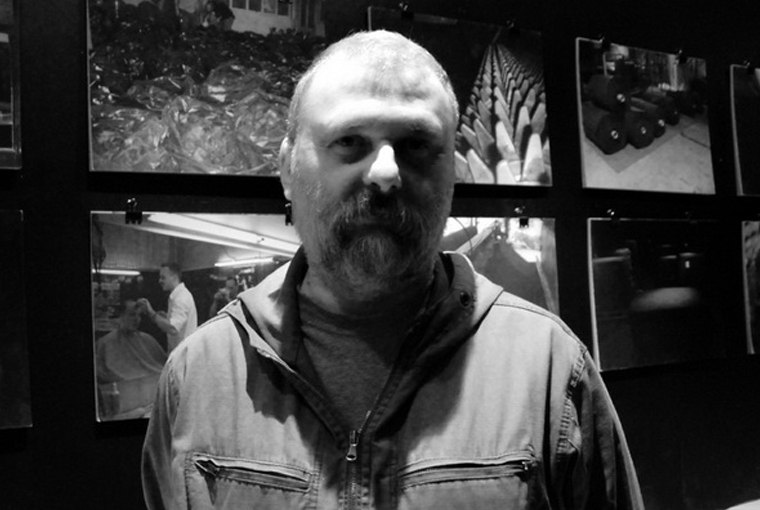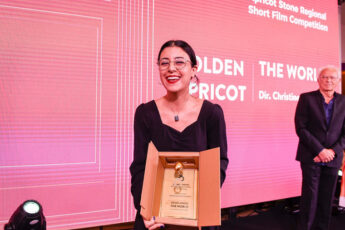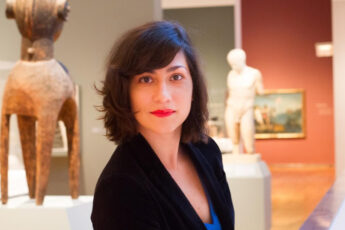
We spoke to Serbian performance and video artist Zoran Todorović, whose work we examined for our Balkan video art issue. Todorović speaks about the seperation of West and East, the concept of micropolitics, and the position of viewer and artist within cultural politics.
Why and when did you decide to turn to video art?
I don’t think of myself as a video artist, rather I see myself in practices which are defined as new media. I use video technique and perceptive experiences of the medium as a tool or a framework that may serve for something to be communicated, but actually in the form of abandoning and erasing the trace of that framework. I don’t have any sentimental relationship towards video art or any other art for that matter, so I see the decision to sometimes make something as a video work or to stage a video installation as a pragmatic one, the most suitable one for some particular moment.
To me, these are foremost the documents which have performative and sometimes provocative purpose. In my own case, there happened no ideological or media turn, or at least video has no central place in that sense in relation to some earlier academic painting practice. This turn occurred early on and is linked more to the usage of installation and the discovery of the body as a platform.
What was the political and social atmosphere back then?
It was the beginning of the transition in Yugoslavia, a time of changes of social paradigm, and the beginning of the fall of both the social and the common state. This process, which has already reached an end, has occured both in capitalist and formerly Socialist countries, but by the end of the 80s and in the beginning of the 90s in different ways and with different consequences and outcomes it was actually driven by the same mechanism which still exists. The catastrophe in former Yugoslavia therefore happened in the context of the neoliberal turn, which had a crucial impact on the happenings back then. The culmination and final result of this transition came with the establishment of numerous different camps, which is the most telling paradigm of this turn whose values and logic we still inherit today.
Do you think that artists play a different role in Eastern Europe and on the Balkan than they do in the West? Is there a difference between reactions you get from audiences in Serbia and other Balkan countries from those you get in the West?
At a certain moment the West, or the EU in particular, offered a new model of exhibiting art from Eastern Europe or the Balkans for instance; it was the model which in fact was related to the art of the former Socialist countries. It is the model of cultural studies and hybrid art which, in one way or another, builds on the model of multiculturalism. I have in mind, above all, the exhibitions of the Manifesta type. This kind of strategy was also offered to some smaller cultures within the so-called old Europe.
Simultaneously and parallel to this, the West, through series of different exhibitions and institutions, tries to maintain some modernistic phantasies about the hegemonic value of its culture and art, primarily with the aim of preserving and defending the achieved worth of artworks, brands and names on the art market. Since nowadays all that is happening within art is in some way verified in terms of the market, this phantasy has its specific weight. In this sense there are differences in the roles that artists assume, depending on the system of representation in which they appear, regardless of the fact that the art world and the art market today became global.
Functioning of my works sometimes depends on local perception which is constantly burdened with some localism, different stereotypes, racism, etc., but my works count on that, so this division of the West, the East, the Balkans, etc., is often the mechanics of the work itself.
Some critics and art theoreticians have compared the effect of your work on the viewer to that of horror films. Do you think that there is a parallel, a fascination with being irritated?
Some of my works produce the effect of abjection which does not allow an easy identification with them, so in this sense some parallels to horror films could be made, but it is more an illustration of this problematic place than a direct parallel which elucidates the problem; I think that this illustration is not crucial in the text in which it is mentioned either. Namely, the problem of the abjection is the problem of the abject (neither the object nor the subject), it is something which is external but is also at the same time yours, for instance, the shit, the snivel, the corpse, etc., it is some ‘accursed share’, the surplus of the waste, which not only belongs to you but in some sense also constitutes you …
The works which I make has relational nature, these are above all procedures or situations which do not have a finite form and in whose formation the audience is somehow involved. The material used in their realization is some kind of tactics in which their institutuional and symbolic origin is inscribed. For example, if I make food out of human tissue, as it was the case with the Assimilation, then it is important that this tissue appers as a waste from the industry of aesthetic surgery, therefore, as an ‘accursed share’ which hinders us to fit into some aesthetic standard. It is a fictional surplus which is problematic, socially produced, and which in an aestheticized form, in the form of tasteful food, is returned to the public, more concretelly, to the audience which somehow must react to this kind of normative stoppage in which it found itself. Here the taboo of canibalism is some kind of a tool through which a symbolic interruption of its own kind is made, where the effect of the abjection occurs as a denied truth of medical and normative procedures which relate to the body and its aesthetization.
Do you think that art can or should free itself from being pleasure-oriented, whether it is on an emotional, intellectual or aesthetic level?
The principle of pleasure may probably be understood as a motivational drive of every human activity, but it certainly is not the essence of art whatsoever through which we recognize and define it, because this essence, as well as any other determination, in fact does not exist.
Is it problematic for your cause to break the “privileged position of the viewer” that your work is exhibited inside relatively isolated/closed locations, i.e. exhibitons and museums, where that precise privileged position of the viewer is typically established and strengthened?
When this privileged position of the viewer that you mention is established, it only means that the consensus is achieved, that the culture has played its part, that the values are defined and that there’s no discussion about them. However, this doesn’t mean that you as an artist fit without any friction into exhibition politics of an institution; you don’t fit especially if it believes and invests in a critical character of art. The point is that all our fundamentals are fictional and only as such they are real. There is no solid ground which would guarantee someone his/her position. When an institution exhibits your work it intercedes in favor of it, and this only means that it exposes itself to the risk of representing. The fact that you exhibit in some museum or a gallery does not mean that the discussion is over. It is only then that it has a good reason to be started because there’s some cultural politics at work which are being tested.
Do you think that your work is globally political, rather than just being micro-political? Do artists in Serbia act as public intellectuals?
In the idiolect within which this construction ‘micro-politics’ occurs, it appears as an opposition to the politics of ‘grand narratives’, politics of nation, class, etc. Thus global politics and micro-politics are not alternatives. Viewed in this way one might say that my art is globally micro-political, it is micro-political in the sense of singularity of some event, but it can be globally recognized.
According to some logic artists should be intellectuals by the very fact that they think publicly, if art is understood as thinking and if art, of course, is practiced in this way. In Serbia there is a certain number of artists who act in such a way.
What is the right medium for video art? Do you think video art on the internet is efficient?
We cannot understand video in a classical way as a signal of the image, it is well known that we no longer are in an analogue media environment. Video is digitalized as the entire world of ours is, and for some works the internet is a logical place of distribution and realization. But I also think there is no unequivocal answer to that question.
Thank you for the interview.




Leave a Comment